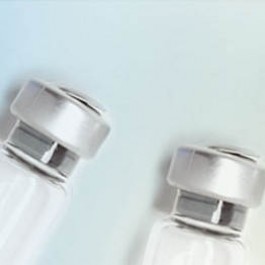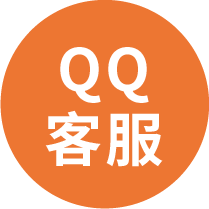Plasminogen (PLG) (NM_001168338) Human Untagged Clone
CAT#: SC328208
PLG (untagged)-Human plasminogen (PLG) transcript variant 2
CNY 3,990.00
Product images

CNY 1,999.00
CNY 2,700.00
Specifications
| Product Data | |
| Type | Human Untagged Clone |
| Tag | Tag Free |
| Synonyms | HAE4 |
| Vector | pCMV6-XL5 |
| E. coli Selection | Ampicillin (100 ug/mL) |
| Mammalian Cell Selection | None |
| Sequence Data |
>NCBI ORF sequence for NM_001168338, the custom clone sequence may differ by one or more nucleotides
ATGGAACATAAGGAAGTGGTTCTTCTACTTCTTTTATTTCTGAAATCAGGTCAAGGAGAG CCTCTGGATGACTATGTGAATACCCAGGGGGCTTCACTGTTCAGTGTCACTAAGAAGCAG CTGGGAGCAGGAAGTATAGAAGAATGTGCAGCAAAATGTGAGGAGGACGAAGAATTCACC TGCAGGGCATTCCAATATCACAGTAAAGAGCAACAATGTGTGATAATGGCTGAAAACAGG AAGTCCTCCATAATCATTAGGATGAGAGATGTAGTTTTATTTGAAAAGAAAGTGTATCTC TCAGAGTGCAAGACTGGGAATGGAAAGAACTACAGAGGGACGATGTCCAAAACAAAAAAT GGCATCACCTGTCAAAAATGGAGTTCCACTTCTCCCCACAGACCTAGGTAA |
| Restriction Sites | Please inquire |
| ACCN | NM_001168338 |
| OTI Disclaimer | Our molecular clone sequence data has been matched to the reference identifier above as a point of reference. Note that the complete sequence of our molecular clones may differ from the sequence published for this corresponding reference, e.g., by representing an alternative RNA splicing form or single nucleotide polymorphism (SNP). |
| OTI Annotation | This TrueClone is provided through our Custom Cloning Process that includes sub-cloning into OriGene's pCMV6 vector and full sequencing to provide a non-variant match to the expected reference without frameshifts, and is delivered as lyophilized plasmid DNA. |
| Product Components | The ORF clone is ion-exchange column purified and shipped in a 2D barcoded Matrix tube containing 10ug of transfection-ready, dried plasmid DNA (reconstitute with 100 ul of water). |
| Reconstitution | 1. Centrifuge at 5,000xg for 5min. 2. Carefully open the tube and add 100ul of sterile water to dissolve the DNA. 3. Close the tube and incubate for 10 minutes at room temperature. 4. Briefly vortex the tube and then do a quick spin (less than 5000xg) to concentrate the liquid at the bottom. 5. Store the suspended plasmid at -20°C. The DNA is stable for at least one year from date of shipping when stored at -20°C. |
| Note | Plasmids are not sterile. For experiments where strict sterility is required, filtration with 0.22um filter is required. |
| Reference Data | |
| RefSeq | NM_001168338.1, NP_001161810.1 |
| RefSeq Size | 1200 bp |
| RefSeq ORF | 411 bp |
| Locus ID | 5340 |
| Protein Families | Druggable Genome, Protease, Secreted Protein |
| Protein Pathways | Complement and coagulation cascades, Neuroactive ligand-receptor interaction |
| Gene Summary | The plasminogen protein encoded by this gene is a serine protease that circulates in blood plasma as an inactive zymogen and is converted to the active protease, plasmin, by several plasminogen activators such as tissue plasminogen activator (tPA), urokinase plasminogen activator (uPA), kallikrein, and factor XII (Hageman factor). The conversion of plasminogen to plasmin involves the cleavage of the peptide bond between Arg-561 and Val-562. Plasmin cleavage also releases the angiostatin protein which inhibits angiogenesis. Plasmin degrades many blood plasma proteins, including fibrin-containing blood clots. As a serine protease, plasmin cleaves many products in addition to fibrin such as fibronectin, thrombospondin, laminin, and von Willebrand factor. Plasmin is inactivated by proteins such as alpha-2-macroglobulin and alpha-2-antiplasmin in addition to inhibitors of the various plasminogen activators. Plasminogen also interacts with plasminogen receptors which results in the retention of plasmin on cell surfaces and in plasmin-induced cell signaling. The localization of plasminogen on cell surfaces plays a role in the degradation of extracellular matrices, cell migration, inflamation, wound healing, oncogenesis, metastasis, myogenesis, muscle regeneration, neurite outgrowth, and fibrinolysis. This protein may also play a role in acute respiratory distress syndrome (ARDS) which, in part, is caused by enhanced clot formation and the suppression of fibrinolysis. Compared to other mammals, the cluster of plasminogen-like genes to which this gene belongs has been rearranged in catarrhine primates. [provided by RefSeq, May 2020] Transcript Variant: This variant (2) differs in the 3' UTR and coding sequence compared to variant 1. The resulting isoform (2) is shorter at the C-terminus compared to isoform 1. Sequence Note: This RefSeq record was created from transcript and genomic sequence data to make the sequence consistent with the reference genome assembly. The genomic coordinates used for the transcript record were based on transcript alignments. |
Documents
| Product Manuals |
| FAQs |
| SDS |
Resources
Other Versions
| SKU | Description | Size | Price |
|---|---|---|---|
| RC229570 | PLG (Myc-DDK-tagged)-Human plasminogen (PLG), transcript variant 2 |
CNY 3,990.00 |
|
| RC229570L3 | Lenti-ORF clone of PLG (Myc-DDK-tagged)-Human plasminogen (PLG), transcript variant 2 |
CNY 5,890.00 |
|
| RC229570L4 | Lenti-ORF clone of PLG (mGFP-tagged)-Human plasminogen (PLG), transcript variant 2 |
CNY 5,890.00 |
|
| RG229570 | PLG (tGFP-tagged) - Human plasminogen (PLG), transcript variant 2 |
CNY 4,370.00 |
其它Plasminogen产品


 United States
United States
 Germany
Germany
 Japan
Japan
 United Kingdom
United Kingdom
 China
China
